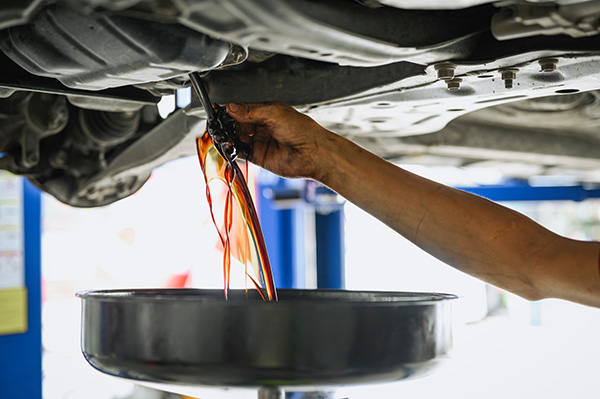
Changing your own oil can save money and help you learn more about your vehicle. It is also easy to make small mistakes that cause leaks, noise, or even engine damage later. If you like to spin the filter yourself, a quick review of the most common pitfalls will help you avoid a messy do over and keep your engine protected.
1. Using the Wrong Oil Viscosity or Spec
Viscosity and specification are not guesses. Modern engines need the exact grade and spec listed on the oil cap or in the owner manual. Using thicker oil than recommended can slow flow on cold starts. Using the wrong spec can affect variable valve timing, turbo lubrication, and emissions controls. When in doubt, match both the viscosity and the manufacturer spec code.
2. Overfilling or Underfilling the Crankcase
Too much oil can whip air into the fluid and create foam, which reduces lubrication. Too little oil starves the pump on hard stops and tight turns. After filling, let the engine idle for a minute, shut it off, wait a couple of minutes, then check the dipstick. The level should sit between the marks, closer to full than low. Recheck after your first short drive.
3. Reusing the Drain Plug Washer or Overtightening
Many vehicles use a crush washer on the drain plug. Reusing a flattened washer is a fast path to a slow leak. Replace it at each service. Also, do not muscle the plug. Tighten to the torque value, not to your forearm strength. Stripped threads in an aluminum pan are an expensive repair that is easy to avoid.
4. Leaving the Old Filter Gasket Behind
When removing the old filter, the rubber gasket can stick to the engine pad. If that happens and you spin on the new filter, you now have two gaskets. The first hard heat cycle will push oil past the seal and leave a puddle on your driveway. Always inspect the pad with a light and fingertip. Make sure the old gasket came off with the filter.
5. Dry Installing the New Filter Seal
A dry seal can bunch or tear when you tighten the filter. Lightly coat the new gasket with clean oil, then spin the filter on until it touches the pad. Follow the filter’s instructions for final tightening. Most call for three-quarters to one full turn after contact by hand. A filter that is too tight crushes the seal. One that is too loose will seep.
6. Skipping the PCV and Air Filter Checks
Fresh oil is only part of the equation. A stuck positive crankcase ventilation valve raises crankcase pressure, which pushes oil past seals and darkens oil early. A clogged air filter enriches the mixture and sends more soot into the crankcase. During every oil change, pop the air box and check the filter. Inspect PCV hoses for cracks and confirm the valve moves freely.
7. Forgetting to Reset the Maintenance Reminder
That little reminder keeps you on schedule. If you forget to reset it, you may miss the next interval. Every vehicle has a reset procedure in the manual or in the dash menu. Some systems also track time, not just miles. This matters if the car makes short trips, since oil ages with time and moisture even when miles are low.
8. Ignoring Leaks or Drips After the Test Drive
A ten-minute test drive is part of the job. Park on a clean surface, let the engine idle, then look underneath with a light. Check the drain plug, oil filter, and cooler lines if equipped. A single drop means the seal is not perfect. Fix it now so it does not become a quart later. Also glance at the oil pressure gauge or warning light during your test. Any change from normal deserves a second look.
Simple Steps That Make Every DIY Oil Change Better
A clean work area and the right tools prevent most mistakes:
- Use the correct filter number and keep a spare crush washer on hand.
- Set a torque wrench for the drain plug and use a paint marker to note the date and mileage on the new filter.
- Recycle oil properly in a sealed container and wipe any spills from the frame or splash shield so you can spot new leaks next time.
Oil Change Help and Inspection in Fairburn
If something feels off after a DIY service, or if the filter area is hard to reach, a quick inspection can save a lot of hassle. Professional shops can verify torque, check for seepage, confirm the correct oil spec, and scan for any maintenance reminders that did not reset.
Get It Done Right at Gowen’s Automotive Repairs in Fairburn, GA
Gowen’s Automotive Repairs can supply the correct oil and filter, replace the drain plug washer, and torque everything to spec. If you prefer to do it yourself, we can still look over your work, reset the interval, and check for leaks so you leave confident.
Schedule your visit today and keep that fresh oil doing its best work for the full interval.